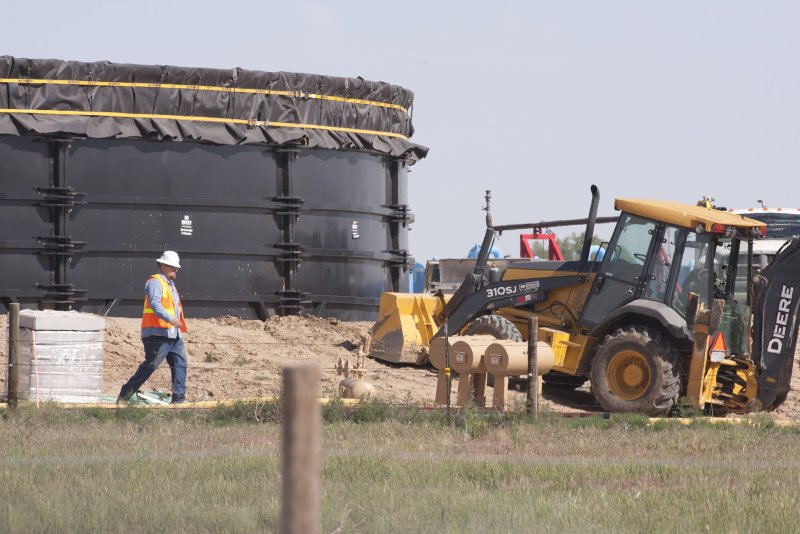Total U.S. oil production could hit 12 million barrels per day, though federal estimates rely on some uncertainties. File photo by Gary C. Caskey/UPI |
License Photo
Feb. 22 (UPI) -- While most of the growth in U.S. oil production comes from shale reserves, a federal report said some of its estimates were based on known uncertainties.
Total U.S. crude oil production is around 10 million barrels per day on average, with most of that coming from shale reserves in the Lower 48. Two shale basins in particular -- the Bakken in North Dakota and the Permian in Texas -- combine to represent the strongest drivers in U.S. crude oil production.
The U.S. Energy Information Administration estimates the Bakken shale accounts for about 20 percent of U.S. shale oil supply growth through 2050. The oil reservoirs in the Permian shale, meanwhile, should account for as much as 43 percent of the growth through 2050.
Last year, the Permian shale accounted for 36 percent of total U.S. shale oil production.
In its latest analysis, EIA said total U.S. oil production could hit 12 million barrels per day by the early 2040s, with shale oil production representing about 68 percent of that total.
"However, future growth potential of domestic tight oil production depends on the quality of resources, technology and operational improvements that increase productivity and reduce costs, and market prices-factors with futures that are both interconnected and uncertain," a daily briefing from the EIA read.
U.S. shale oil production has been more resilient to historically lower crude oil prices than expected. In their monthly report from October, economists with the Organization of Petroleum Exporting Countries said the price for West Texas Intermediate, the U.S. benchmark for the price of oil, could be in a range between $50 per barrel and $55 per barrel for 2018.
"A rise above that level would encourage U.S. oil producers to expand their drilling activities, otherwise the lower prices could lead to a reduction in their capital expenditures," the report read.
WTI was closer to $62 per barrel early Thursday, but down 7 percent from the peak so far this year.
Texas accounts for about half of total inland exploration and production activity. Measured in part by rig counts, the Permian is the most active in the country. Some analysts, however, are worried about the buildup in drilled, but uncompleted wells. Those types of wells are ones that operators don't yet want to put into production because of market conditions and numbers are still increasing even as crude oil prices flirted with $70 per barrel in early 2018.















